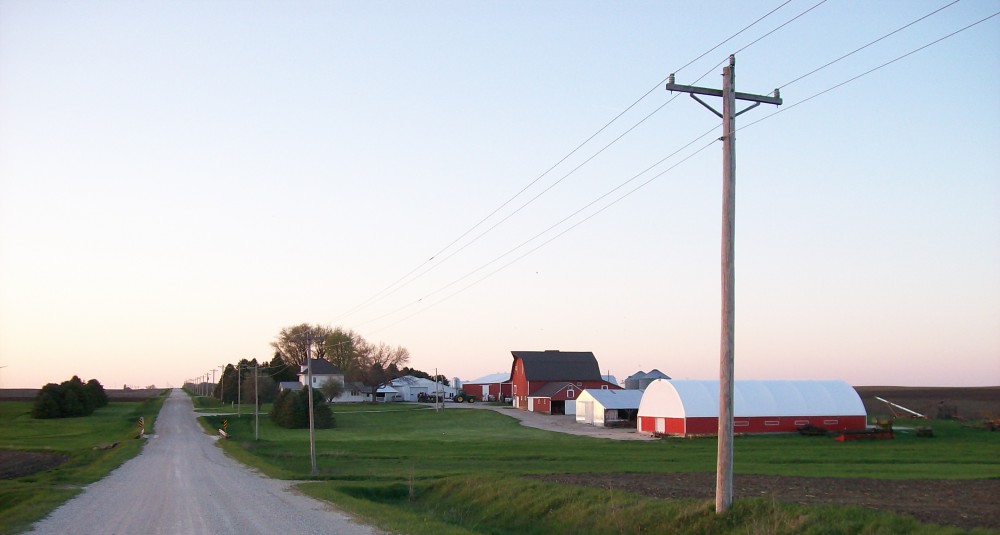Scarcely a day has passed since yet another trek across Iowa has transpired. Bodily aches, cramps, and pains have vanished although joints, tendons, and ligaments have long memories and cringe at the very thought of the unpleasant experience. In spite of such physical tribulations, the previous journey was successfully completed as will any future voyages be it brief or arduous. However, being squeezed and pressed together like extracting olive oil from hardened seeds is implicitly connected to these three weeks along with all the other excursions and memories. Any personal space issues have been neatly resolved or, at least, compressed and excreted as sweat (hence it cannot be sold as ‘cold pressed’). Digressions aside, the undercurrent of all these events is omnipresent yet is a mere wafting wind only seen when it moves a wind turbine: nonexistent but deeply significant: the interconnectedness of reality.
Although many instances of the underlying theme of this trip, if not reality itself, has presented itself through the guises of guard llamas with poor dental health to ballads lamenting government influence in agriculture with lyrics ranging from complete isolationism to misguided, ill-fated attempts at helping farmers and the environment utilizing direct payments, subsidized crop insurance, and other interventions. Every farmer has a song that is quickly performed on cue it seems; however, these songs share the very same hidden current that has defined this trip whether unintentional or otherwise.
One of the more obvious manifestations of the rhythm of reality was on Galen Bontrager’s farm, located in Eastern Iowa, far from Des Moines. Whether it was impaling chicken carcasses on PVC pipes or walking in a healthy pasture filled with a variety of grasses, herbs, and greenery not found in a typical suburban lawn, interconnection avoided explicit mention but was vitally important. As briefly alluded to, there was a llama, who guarded the sheep, and a dog who protected the chickens; both animals were ingrained into their respective herds, being an inseparable aspect of the operation. Personified by the smell of the soil, which actually smelled of dirt and not the devoid, scentless substance that many believe it to be, interconnection made an unmistakable surface appearance in an artfully mundane guise that would have been easily overlooked.
Being one of three characteristics of reality, interconnection is vastly significant but generally overlooked and swept under the rug along with impermanence and discomfort, the other two key defining aspects (hence society’s innate obsession with death, pain killers, and the like), much like smelly soil. Reality is similar to a spider’s web: a vibration on the far corners reverberates throughout the entire web itself, no matter how trivial the stimulus (Internet memes spring to mind). However, since all beings live with the web constantly vibrating, we become desensitized to its motions, ignoring and suppressing the jarring feeling to maintain some sort of sanity, trying to stay afloat like a mere leaf weathering the rapids of a nervous river current. Due to this feigned ignorance, we become inward looking creatures, focused upon the immediate perspective nearest to us: the tidal waves we cannot ignore (hence why the death of a single person is a tragedy but the death of millions is a statistic as Stalin once proclaimed). Though this mentality saves us, it is only temporary as each strand of the web of reality cannot be independent or it would fall to the abyss. Through the guise of culture, we are told two values: one of the self-made millionaire who is happy and surrounded by material goods and a seemingly conflicting story of the selfless person who is happy due to charitable acts and the like. Although these two ideals seem at odds with one another, interconnection, along with the other two characteristics of reality, declares them to be non-dualistic. Reality is a bucket with a hole in the bottom filled with sand that when left alone does not drain but when more sand is added drains to equilibrium. The sand acts as its own plug much like the two ideals preached by culture: a balance is acquired that sustains this non-antagonistic conflict and any other (even the disbelief of the three aspects of reality!).
Diversions aside, interconnection has been an omnipresent shadow cast by multiple sources but usually overlooked unless it is directly overhead. Though there are few certainties, the web of the way displays this fundamental nature of reality through wind turbines, pig semen, and a host of other forgotten aspects. To look for interconnection is a simply complex task, requiring an openness to its vibrations everywhere they originate from the smells of the soil to foreign sweat pressed up against another arm. Many have become dislocated from these sensations or categorize them neatly in little boxes to be revealed out of context later on (which is the reason why my posts have disavowed pictures).
If anything, I have acquired a deep respect for farmers whether they practice commodity farming or alternative farming, steeped in dogma or open to new ideas, and/or have succeeded or failed miserably, for they have an understanding of interconnection that few others could ever possess. Being tied to weather patterns, government policy, the will of speculators, and many other factors beyond their control, farmers realize their situation is generally outside of their control, something that few others can comprehend. Unlike many others, farmers seem not to despair over this fact that would make many wage earners unsightly twitch. Yet, here I am avidly pursuing a seemingly foreign entity with only glimmers of success and rarely grasping the sand, only to watch it fall between my fingers, forever lost somewhere on the beach of reality!






